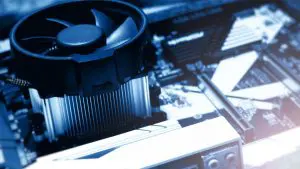INTRODUCTION Graphite is a naturally occurring form of pure carbon in which the atomic bonds interlock in the layers of a two-dimensional molecular sheet. In nature, dense, rigid graphite ore is mined, purified, and processed into numerous applications, including the inexpensive flexible natural graphite sheets used in electronics. The ore is mechanically reduced and then … [Read more...]
Managing Cooling Fan Noise In Product Design
ABSTRACT Cooling fan noise is a system property determined as much by thermal and mechanical design and fan selection as by a fan’s acoustical design. While even the quietest fan can be used in a noisy manner, a significant fraction of unpleasant surprises can be avoided. NOMENCLATURE C Numerical constant D … [Read more...]
10 Must Attend Technical Sessions at SEMI-THERM 35
The 35th Semiconductor Thermal Management conference starts in a week and is being held in Silicon Valley, CA. Electronics Cooling is one of the media sponsors and will have an exhibit booth –stop by to say hello, pick up some literature and chat with us to learn more about what is “hot” in the electronics industry and how it is so “cool” to work on thermal management! … [Read more...]
Some New Cooling Ideas are Needed Here
In the 1920s, the field of physics was in disarray. The reason was that many careful observations and experimental data could only be explained by conflicting theories; for example, some proved that light was a wave, while others provided it had a particle-like nature. Other experiments, such as those in black-body radiation or the photoelectric effect, could not be explained … [Read more...]
Thermal Management of Electronic Equipment using Phase Change Materials (PCMs)
Background The cooling of electronics and telecom equipment is essential to the proper operation of all applications. Removal of generated heat from these systems has been traditionally carried out via heat conduction/convection techniques. Phase Change Materials (PCMs) are a relatively new concept for the cooling of electronic systems. A PCM is used to absorb peak energy … [Read more...]
- « Previous Page
- 1
- …
- 50
- 51
- 52
- 53
- 54
- …
- 356
- Next Page »









